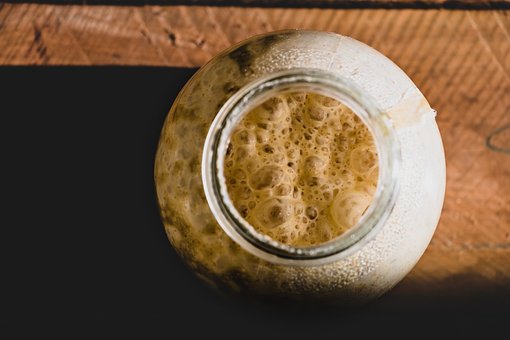 Although yeast has been around for a very, very long time, its only in the last 150 years that we've come to know what it is and how it works. Louis Pasteur is the man who figured out how yeast works even though people have been making bread since ancient Egyptian times.
Although yeast has been around for a very, very long time, its only in the last 150 years that we've come to know what it is and how it works. Louis Pasteur is the man who figured out how yeast works even though people have been making bread since ancient Egyptian times.Louis Pasteur discovered that yeast feeds on starches in flour to produce carbon dioxide which is responsible for causing bread to rise. Nine years after this discovery, Fleischmann's yeast was founded and the modern world began.
This type of yeast is commonly referred to as bakers yeast. Prior to yeast being sold in the store, most bakeries used yeast obtained from beer brewers but when they changed from a top fermenting to bottom fermenting yeast, the amount of yeast available decreased, there was a change in the way bread was made but it did not solve the lack of available yeast.
In 1879, the process of making yeast in large tanks began in Great Britain. This new process lead to the cubes of fresh yeast being available to home bakers in the early 20th century. World War II lead to Fleischmann's creating a granulated active dry yeast which didn't need refrigeration and had a longer shelf life for the military. Since them, companies have invented a faster rising yeast which cut down on the time needed to bake bread and an instant yeast made for bread makers.
Currently, yeast is produced by selecting a strong and vigorous cell from the appropriate strain using a strong microscope. The cell is then placed in a test tube filled with the proper nutrients and the cell reproduces using the budding method. Once it reaches a certain size, it is moved to a glass flask filled with a nutrient where the cells continue dividing and reproducing. The cells keep dividing and they are moved from tank to tank until it fills a multistory tank with about 60,000 gallons for nutrients and cells. When ready, the yeast cells are washed and separated from the nutrient liquid by use of a centrifuge at which point it is finished off and sent to market.
For myself, I've discovered the best bread I've made is when I mix water, flour, and yeast to make a pancake like mixture that I set out for 12 to 24 hours. At this point, I add oil, more flour, and all the other ingredients needed for a good loaf of bread. By doing it this way, my bread is much softer, chewier, and is so much better than anything else I've made.
Let me knwo what you think. I'd love to hear.
No comments:
Post a Comment